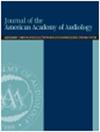Factors Influencing the Purchase Rate of Cartilage Conduction Hearing Aids.
IF 1
4区 医学
Q3 AUDIOLOGY & SPEECH-LANGUAGE PATHOLOGY
引用次数: 5
Abstract
BACKGROUND Innovated hearing aids (HAs), termed cartilage conduction hearing aids (CC-HAs), show good performance in patients with closed ears and continuous otorrhea. However, factors other than the ear condition that influence the purchase rate of CC-HAs remain unclear. PURPOSE To identify the factors that influence the purchase rate of CC-HAs. RESEARCH DESIGN A correlational study. STUDY SAMPLE A total of 249 patients were enrolled. DATA COLLECTION AND ANALYSIS The patients' demographics, clinical characteristics, outcomes, and CC-HA transducer types were compared. The data were analyzed for six groups classified based on the ear condition. RESULTS In the unilateral closed-ear group, the purchase cases were significantly younger than the nonpurchase cases (p < 0.05). Regarding the outcomes in the bilateral closed-ear group, the purchase cases showed significantly better-aided thresholds at 0.25 and 0.5 kHz than the nonpurchase cases. No significant differences in the functional gains and speech recognition scores were found between purchase and nonpurchase cases in all six groups. Regarding the transducer type, the continued-use rate of the simple transducer type was significantly lower in the bilateral chronic continuous otorrhea, bilateral open, and unilateral open groups. CONCLUSION In the closed ears, no remarkable negative factors were found. Transducer type had a significant influence on the continued-use rate in the nonclosed ears including the ears with chronic continuous otorrhea, although the purchase rate of CC-HAs in the bilateral chronic continuous otorrhea group was comparable to the closed ears.影响软骨传导助听器购买率的因素。
创新助听器(HAs),被称为软骨传导助听器(CC-HAs),在封闭耳和持续性耳漏患者中表现良好。然而,除耳朵状况外,影响CC-HAs购买率的因素尚不清楚。目的探讨影响cc - ha采购率的因素。研究设计相关研究。研究样本共纳入249例患者。数据收集与分析比较患者的人口学特征、临床特征、结局和CC-HA换能器类型。根据耳部状况将数据分为六组进行分析。结果单侧闭耳组购车患者年龄明显低于非购车患者(p < 0.05)。对于双侧闭耳组的结果,购买组在0.25和0.5 kHz的辅助阈值明显优于非购买组。在所有六组中,在购买和非购买的情况下,功能增益和语音识别得分没有显着差异。换能器类型在双侧慢性持续性耳漏组、双侧开放组和单侧开放组中,单纯换能器的持续使用率明显较低。结论在封闭耳内未发现明显的不良因素。尽管双侧慢性持续性耳漏组CC-HAs的购买率与闭耳组相当,但换能器类型对包括慢性持续性耳漏的非闭耳组的继续使用率有显著影响。
本文章由计算机程序翻译,如有差异,请以英文原文为准。
求助全文
约1分钟内获得全文
求助全文
来源期刊
CiteScore
3.10
自引率
0.00%
发文量
46
审稿时长
6-12 weeks
期刊介绍:
The Journal of the American Academy of Audiology (JAAA) is the Academy''s scholarly peer-reviewed publication, issued 10 times per year and available to Academy members as a benefit of membership. The JAAA publishes articles and clinical reports in all areas of audiology, including audiological assessment, amplification, aural habilitation and rehabilitation, auditory electrophysiology, vestibular assessment, and hearing science.

 求助内容:
求助内容: 应助结果提醒方式:
应助结果提醒方式:


